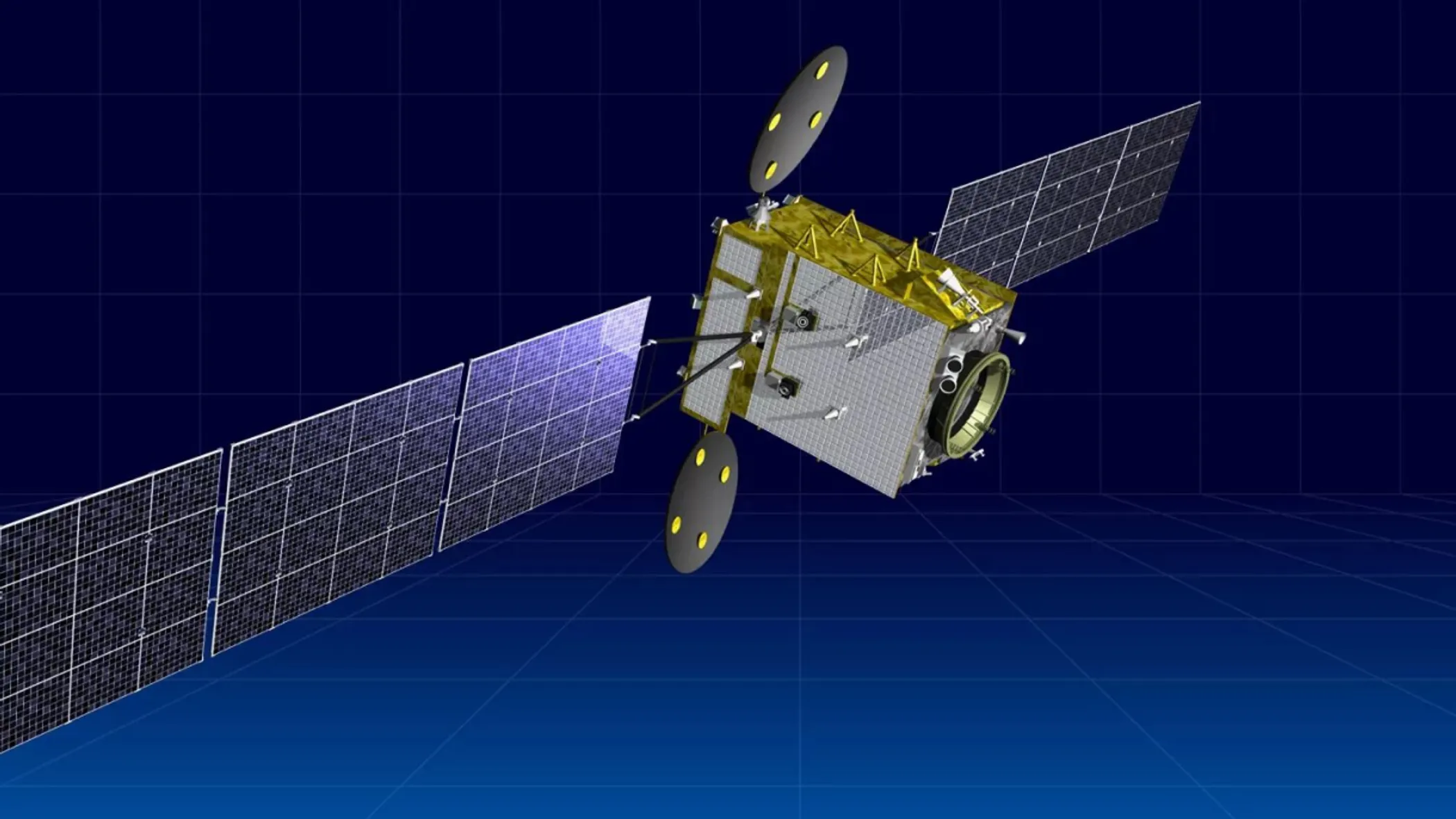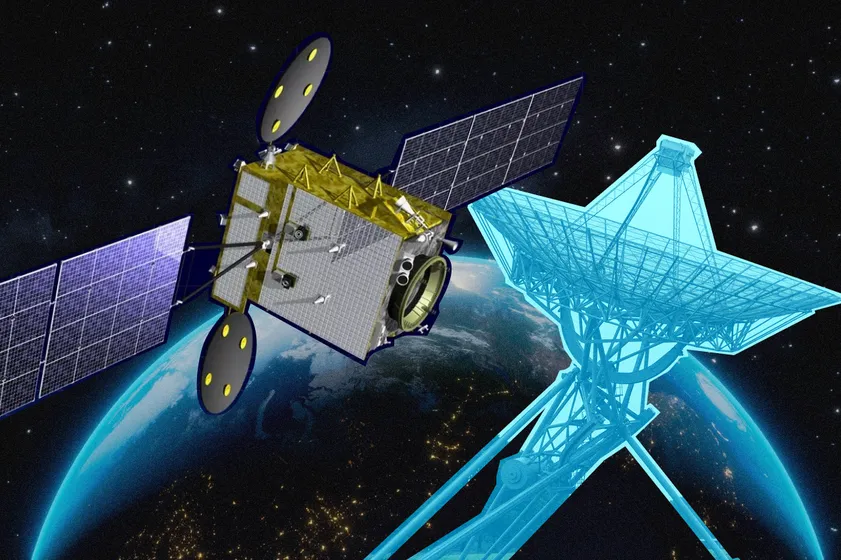With the recent rise of SpaceX and the increasing demand for commercial space launches, Kazakhstan has started to position itself as a key player in the Central Asian space commercialization landscape.
In 2023, Kazakhstan shook on deals to provide satellite communications to neighboring countries, fostered collaboration with foreign partners for domestic spacecraft production, and unveiled plans for remote sensing initiatives and the expansion of our satellite constellation. QazMonitor analyzed this year's developments in the space technology sector.

Telecom deals
In 2023, Kazakhstan expanded its space commercialization efforts in Central Asia, with Tajikistan becoming the latest addition to the cooperative endeavors involving the Kyrgyz Republic and Uzbekistan. This development stems from Kazakhstan entering into an agreement with Tajik telecommunications company Net Solutions to launch a pilot project aimed at providing Internet services to ten rural settlements in Tajikistan via the KazSat-3 satellite. Once the testing phase is successfully completed, the parties have plans to extend Internet access to about fifty additional remote villages across the country.
As a matter of fact, our regional neighbor has become the primary beneficiary of Kazakhstan's IT export initiatives. The provision of telecommunication signals to Tajik settlements not only serves as a significant milestone but also comes with the added advantage of assisting in the development of digital services, which marks the first time our country is exporting its domestic GovTech solutions to third-party entities.

Real-time satellite monitoring
The national satellite constellation's impact extends beyond just telecommunications, as remote sensing capabilities enable orbital monitoring of more than 2,500 settlements to date, encompassing Kazakhstan’s vast expanses. This data covers not only Astana and Almaty, but also smaller cities, remote villages, and national parks like Burabay or Kolsay Lakes.
What makes this application particularly significant is its role in identifying illegal dumps and waste disposal sites. Satellites can swiftly pinpoint landfills that lack a corresponding license in the database, prompting an immediate notification to the Ecology Ministry, local authorities, and the prosecutor's office. Furthermore, the integration of satellite data with geospatial analytics is instrumental in tracking changes in land use, whether in agriculture, settlements, or business activities. This verification process ensures the resolution of discrepancies between reports and on-the-ground situations.
Remote sensing plays a role in realizing the President's directives on rational resource utilization. In this context, the national company Kazakhstan Garysh Sapary has collaborated on the development of Zher Inspector and AgroSpace web resources, providing them with precise satellite imagery for effective agricultural land use. The company also has developed a unified platform for subsoil users, which offers comprehensive information about the nation's subsoil. This platform streamlines the process for investors to order services related to subsoil use, exploration, and subsequent activities.

Launch of Spacecraft Assembly and Test Facility
Perhaps one of the most significant achievements in the domestic space industry was the long-awaited launch of the Astana-based Spacecraft Assembly and Test Facility. After its pilot operation in December 2022, the Assembly was fully operational by the end of March, standing as the sole facility in Central Asia capable of producing a wide range of satellites utilized in telecommunications, scientific experiments, and Earth monitoring.
This venture is a result of a collaborative effort between Kazakhstan Gharysh Sapary and the French company Airbus Defence and Space. Specialists from the European manufacturer have also been involved in testing the facilities and business processes of the assembly, with the certification process having given approval for testing and manufacturing spacecraft weighing up to six tons with maximum dimensions of 3x3x6 meters. The complex is equipped with unique test chambers, and its staff have received training in France and the UK.
"The good news is that the Assembly's inaugural project will involve replacing the constellation of existing remote sensing satellites," said Aidyn Aimbetov, the Head of Kazakhstan Gharysh Sapary. He emphasized that domestic satellites have significantly exceeded their warranty periods, and the Assembly's launch will establish a technological and production base in Kazakhstan for the design, manufacture, assembly, and testing of modern spacecraft, payload components, and space technology elements. The design and construction of satellites are already in progress.

Plans for 2024 and beyond
The coming year has taken shape with a series of agreements involving foreign space agencies and companies. Kazakhstan and France partnered up once again to co-produce communication satellites, with the first batch slated for commissioning in 2026. These satellites are intended to replace the aging KazSat satellites and decommissioned remote sensing satellites.
Several European aerospace industry companies, including Airbus Defence and Space, Thales Alenia Space, ReOrbit, and SES, discussed with the Digital Ministry and Kazakhstan Gharysh Sapary regarding the provision of Internet access in remote areas of our country. The domestic industry also plans to partner with the Turkish Defense Industry Agency and Turkish Aerospace Industries on the replacement of the current KazSat-3 satellite with a more advanced model, KazSat-3R.
Overall, 2024 will be a true testing phase for the Spacecraft Assembly and Test Facility. Since June this year, the Assembly has been working on on a constellation of medium-resolution satellites. This project has received an allocation of ₸18 billion from the republican budget, with more extensive plans on the horizon. In the next two to three years, a larger task looms — the replacement of high-resolution satellites. Concurrently, the domestic industry also plans to localize the production of certain components for future spacecraft.










